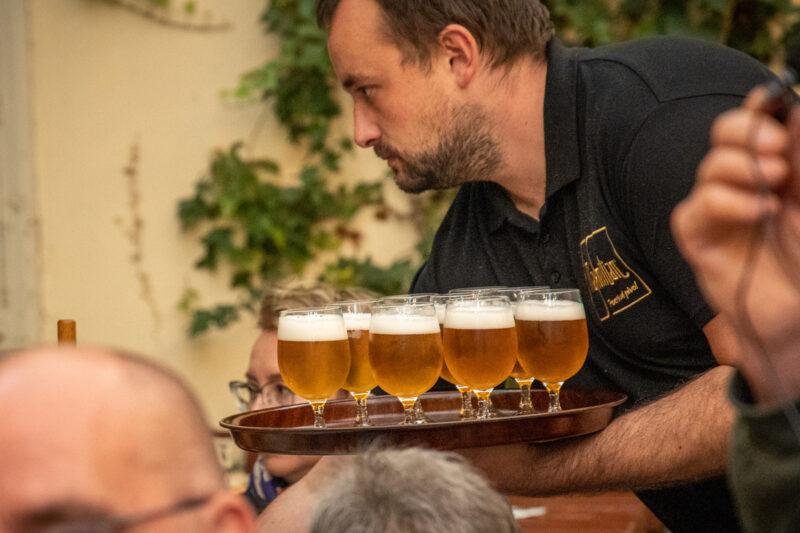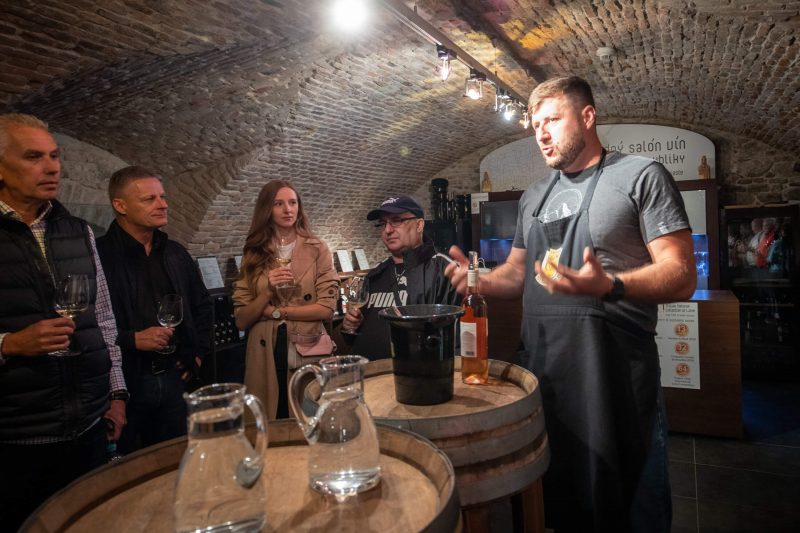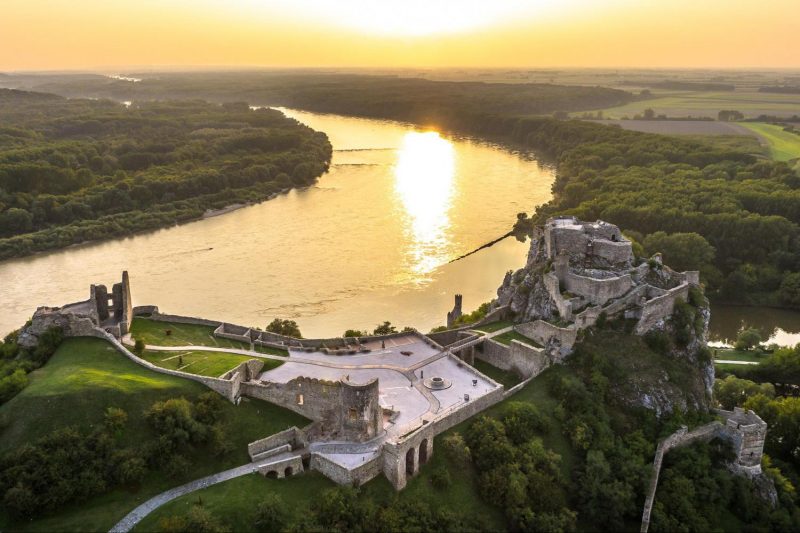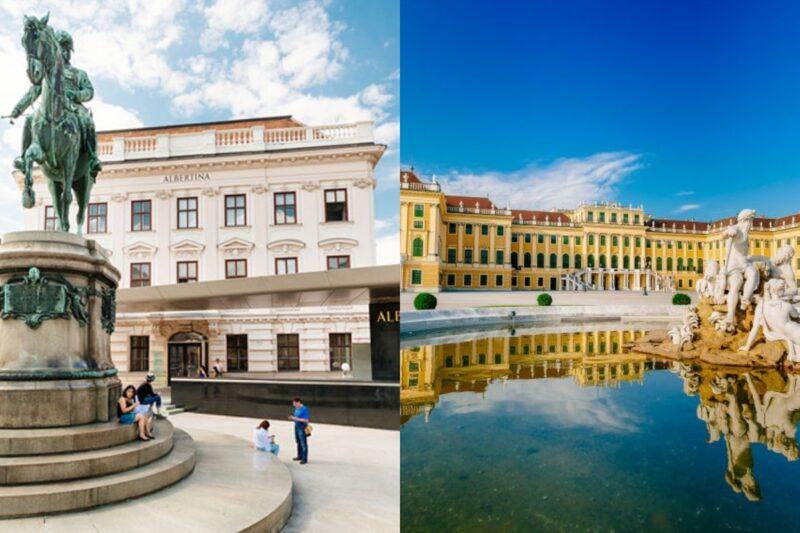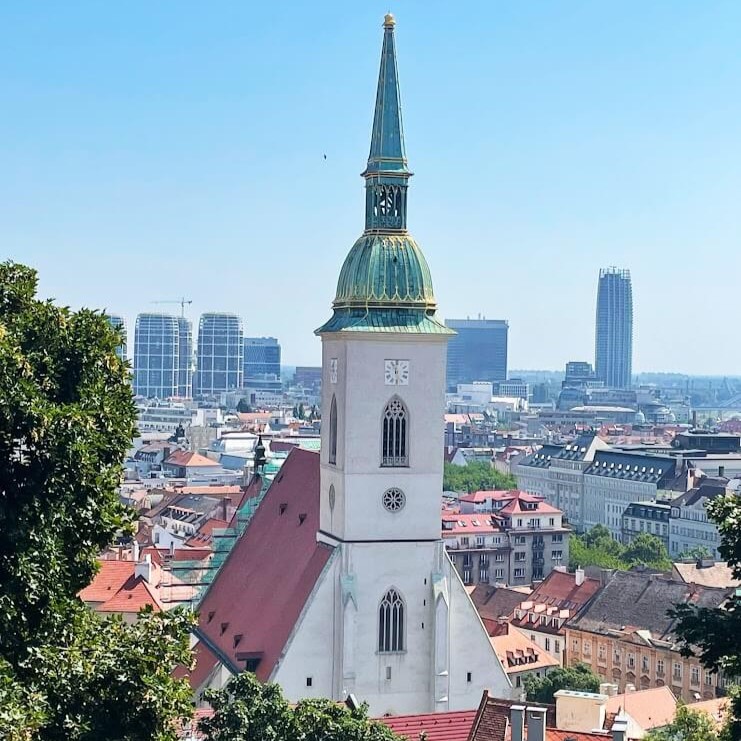
St. Martin’s Cathedral in Bratislava
St. Martin’s Cathedral is the biggest and foremost sacral sight in Bratislava. Its origins date to 1221 when the Provost requested Pope Honorius III to grant a permission to relocate the capitular church from the Castle to the city. Works thus began in the 13th century on the site of the former cemetery chapel of St. Martin to build a church of the Sacred Saviour. As the new church proved too small, construction of the present Cathedral began in 1320. Nonetheless it was the older patronym of St. Martin that remained attached to the Cathedral. The church was consecrated in 1452, though the construction of the presbytery continued until 1487. In 1563 the Cathedral became the coronation cathedral of Hungarian monarchs and served the purpose until 1830. In the 18th century the Archbishop of Esztergom, Emeric Esterhazy invited Baroque artists led by Georg Rafael Donner to carry out Baroque reconstruction of the Cathedral. In the next century, however, the church regained its original Gothic style. Since 2008 St. Martin’s Cathedral is the cathedral church of the Bratislava Archdiocese.
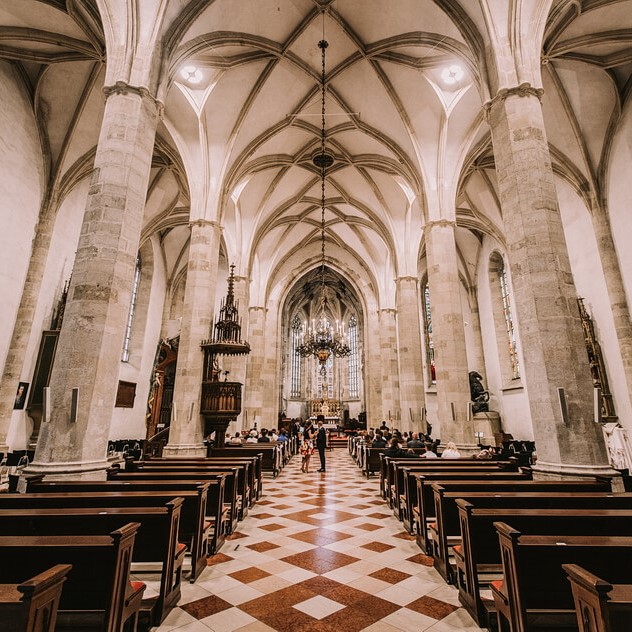
St. Stephan’s Crown at St. Martin’s Cathedral
The spire is topped by a true rarity, the 1.6 metres tall gold plated replica of Hungarian Royal Crown. It is placed on a square cushion with sides measuring 1.2 metres in length and 0.5 metres in heigh. The piece weights 150 kg. The crown is a reminder of the illustrious coronation era of the cathedral.
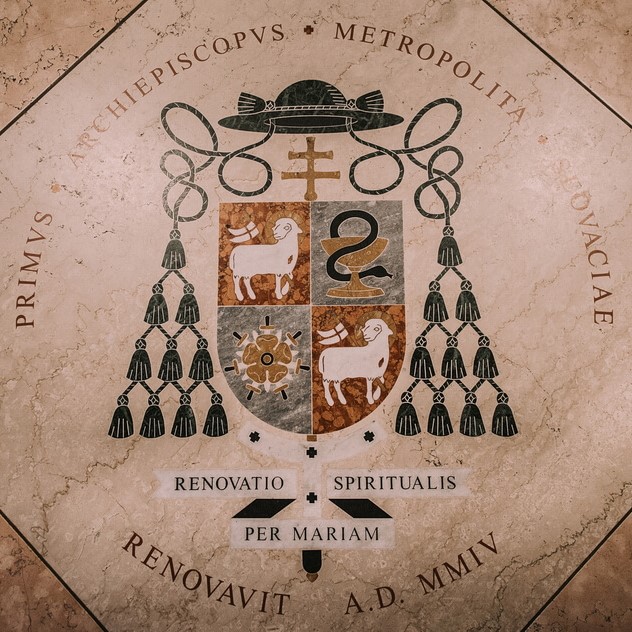
Cathedral Bells
During the First World War the five old bells of St. Martin’s Cathedral in Bratislava were removed and melted to be converted into cannons. Only one bell, Wederin, proved impossible to remove because of its weight of 2.5 tons. Made in 1674 it is one of the five most treasurable bells in Europe. Five bells were returned to the spire in 2000 as a gift from the capital cities of the neighbouring countries. The largest bell, weighing 2.2 tons, comes from Austria. The bells announce noon on Sundays via the Slovak Radio. The cost of the remaining two bells was covered from public collection among churchgoers.
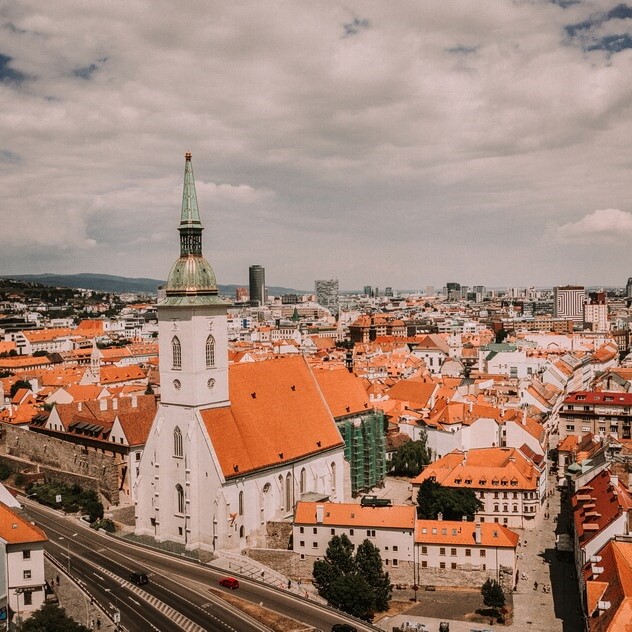
The miracle of Bratislava
Strange things started to happen after the death of one of the Bratislava burghers, Hans Klement Zwespenbauer. His spirit allegedly appeared recurrently between 24 June 1641 and 29 June 1642 to the pious Regina. He asked her to request from his widow 200 golden cions which, when alive he had stolen in a robbed murder. He was not allowed to enter the Purgatory for he didn’t believe the revelations. The spirit was demonstrating its authenticity by leaving burned imprints of hand on drapery or trunk. The Archbishop Emeric Losy set up a committee to investigate the case. Provost Michael Kopcsanyi was the first to make a written report of the event. Regina’s testimonies were confirmed by 32 sworn witnesses. Meanwhile, the sculptor George Scheilbel made the statue of Piety. He was allegedly guided by Han’s spirit which kept explicitly suggesting how and from which wood to carve the statue. The completed work was transferred to the St. Martin’s Cathedral in Bratislava on 29 June 1642. Prior to that people saw white dove fly up. It was a sign that Hans was forgiven. The statue of Piety is still part of the Altar of Our Lady of Sorrows in the southern Nave. Regina’s opponents, however argued that her testimony was a fiction and decided the statue of Piety was a wooden devil.
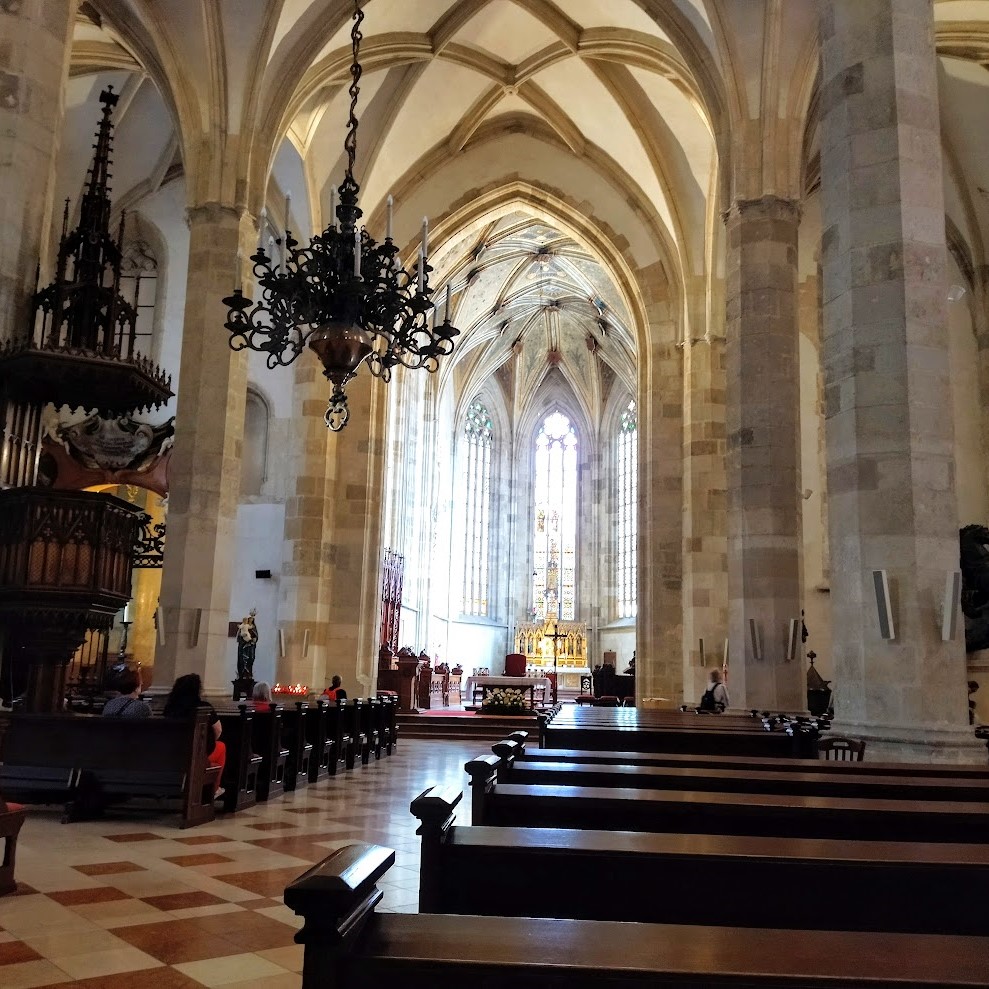
The text was used from DAJAMA – Bratislava Tourist Guide.

